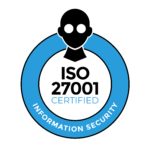CIS audit compliance refers to the process organizations undergo to demonstrate their adherence to cybersecurity frameworks developed by the Center for Internet Security (CIS). This compliance standard has become increasingly important as organizations face mounting pressure to protect sensitive data and systems from cyber threats. Unlike traditional financial audits, CIS compliance focuses specifically on cybersecurity controls and practices that help you defend against attacks and data breaches.
The relevance of CIS compliance spans across virtually all industries, particularly those handling sensitive data or operating critical infrastructure. Organizations pursuing CIS compliance typically include businesses seeking to demonstrate security maturity to customers, vendors required to meet contractual security obligations, and companies operating in regulated industries. Government entities, healthcare organizations, financial services firms, and technology companies commonly pursue CIS compliance to meet both regulatory requirements and customer expectations.
What it is
CIS compliance originates from the Center for Internet Security, a nonprofit organization founded in 2000 that develops globally recognized cybersecurity best practices. The organization emerged from the SANS Institute and has grown to become a leading authority on cybersecurity standards. CIS operates as a forward-thinking, nonprofit entity focused on enhancing the cyber readiness and response of public and private sector entities.
The primary goal of CIS compliance centers on implementing and maintaining effective cybersecurity controls based on consensus-driven best practices. The scope encompasses two primary frameworks: the CIS Critical Security Controls (CIS Controls) and CIS Benchmarks. CIS Controls provide a prioritized set of actions that you can implement to improve your cybersecurity posture, while CIS Benchmarks offer detailed configuration guidance for securing specific technologies and systems.
Core requirements and principles
CIS compliance operates around several fundamental components that you must address:
The CIS Controls represent 18 critical security controls organized into three Implementation Groups (IG1, IG2, and IG3). These controls cover essential areas like inventory management, access control, data protection, incident response, and security awareness training. Each control includes specific safeguards that you should implement based on your organization's size and risk profile.
CIS Benchmarks provide detailed, step-by-step configuration guidance for over 100 technologies, including operating systems, cloud services, network devices, and software applications. These benchmarks represent consensus-driven recommendations developed by cybersecurity professionals and are regularly updated to address emerging threats.
Risk assessment and management requires you to conduct regular evaluations of your cybersecurity posture, identify vulnerabilities, and implement appropriate remediation measures. This includes both automated scanning and manual assessment of security controls.
Continuous monitoring and measurement ensures you maintain your security posture over time through regular testing, monitoring, and reporting on the effectiveness of your security controls.
Documentation and evidence collection demonstrates that security controls are properly implemented, tested, and maintained throughout the audit period.
Types and categories
CIS compliance includes several distinct categories based on organizational size and complexity:
Implementation Group 1 (IG1) targets small to medium businesses with limited IT resources and focuses on essential security controls that provide the highest return on investment. IG1 includes 56 safeguards across the 18 CIS Controls.
Implementation Group 2 (IG2) applies to organizations with moderate IT resources and addresses 74 safeguards. These organizations typically have dedicated IT staff and can implement more sophisticated security measures.
Implementation Group 3 (IG3) encompasses all 153 safeguards and applies to large organizations with significant IT resources, dedicated security teams, and complex technology environments.
You can also pursue sector-specific compliance where CIS has developed specialized guidance for particular industries such as healthcare, financial services, or critical infrastructure.
Compliance process
Achieving CIS compliance follows a structured approach that typically spans 6-18 months depending on your organization's size and existing security maturity:
Initial assessment and scoping involves determining which Implementation Group applies to your organization and identifying which systems and processes will be included in the compliance scope. You should also conduct a gap analysis to understand your current security posture versus CIS requirements.
Policy development and documentation requires creating or updating security policies, procedures, and standards to align with CIS Controls. This includes incident response plans, access control policies, data protection procedures, and security awareness training programs.
Control implementation involves deploying technical and administrative controls identified during the gap analysis. This may include installing security tools, configuring systems according to CIS Benchmarks, implementing access controls, and establishing monitoring capabilities.
Evidence collection and documentation requires gathering proof that controls are properly implemented and functioning as intended. You must maintain detailed records of security configurations, test results, training records, and incident response activities.
Internal testing and validation involves conducting thorough testing of all security controls to ensure they operate effectively and meet CIS requirements before the formal audit begins.
Formal audit engagement includes selecting a qualified auditor, providing required documentation, participating in interviews and testing, and addressing any identified deficiencies.
Key roles throughout this process include executive sponsors who provide leadership support, project managers who coordinate activities, IT teams who implement technical controls, security professionals who design and test controls, and business stakeholders who ensure operational requirements are met.
Common challenges
Organizations frequently encounter several obstacles when pursuing CIS compliance:
Resource constraints represent the most common challenge, as implementing comprehensive security controls requires significant investment in people, technology, and time. Many organizations underestimate the effort required to achieve compliance, particularly smaller businesses with limited IT resources.
Complexity of implementation arises from the detailed nature of CIS Controls and Benchmarks. Organizations often struggle to interpret requirements correctly and implement controls in ways that align with their specific technology environments and business processes.
Documentation and evidence collection proves challenging for organizations that lack mature documentation practices. CIS compliance requires extensive documentation of policies, procedures, configurations, test results, and ongoing monitoring activities.
Legacy system integration creates difficulties when you must apply modern security controls to older systems that may not support recommended configurations or monitoring capabilities.
Organizational change management becomes necessary as CIS compliance often requires changes to established processes, responsibilities, and workflows. Resistance to change from staff members can slow implementation efforts.
Maintaining compliance over time requires ongoing effort and resources. Organizations sometimes achieve initial compliance but struggle to maintain controls and documentation on an ongoing basis.
These challenges typically occur because organizations approach compliance as a one-time project rather than an ongoing program, lack executive support for necessary investments, or attempt to implement too many controls simultaneously without proper planning.
Benefits of compliance
CIS compliance delivers significant value across multiple dimensions:
Enhanced security posture provides the most direct benefit, as implementing CIS Controls substantially reduces cybersecurity risk. Organizations that follow CIS guidance typically experience fewer successful cyber attacks and data breaches.
Competitive advantage emerges when you can demonstrate mature cybersecurity practices to customers, partners, and stakeholders. CIS compliance serves as a differentiator in competitive situations and can accelerate sales cycles.
Regulatory alignment occurs because many CIS Controls align with requirements from various regulatory frameworks, including NIST Cybersecurity Framework, ISO 27001, and industry-specific standards. This alignment can reduce compliance burden across multiple requirements.
Operational improvements result from the structured approach to security management that CIS promotes. Organizations often discover process improvements and efficiency gains while implementing security controls.
Cost reduction can occur through reduced incident response costs, lower insurance premiums, and more efficient security operations. The preventive nature of CIS Controls helps you avoid costly security incidents.
Stakeholder confidence increases when you can demonstrate commitment to cybersecurity best practices through third-party validation of your security controls.
Who needs it and when
CIS applies across sectors, and is especially valuable when:
- You’re managing growing infrastructure. IG2/IG3 controls prepare your operation for scale.
- You’re responding to incidents or findings. CIS lets you implement improvements that map to recognized safeguards.
- You’re preparing for other frameworks. A CIS-aligned program supports ISO, NIST, and industry-specific standards.
- You’re dealing with customer or partner demands. Many procurement reviews include configuration evidence or expect IG1-level hygiene.
State/local governments, financial services, healthcare providers, and education institutions often leverage CIS as a starting control framework or required minimum.
Preparation tips
Getting started with CIS doesn’t require major investments—but it does require a plan.
Assign a security lead: Ownership drives accountability. Designate someone to lead assessments and reporting.
Inventory devices and apps: Know what you need to protect. Use existing tools (MDM, CMDB, EDR, etc.) or add asset discovery solutions.
Run assessments early: Use CSAT to assess control coverage and CIS-CAT to evaluate configurations. These tools create your baseline.
Target IG1 first: Focus early efforts on the most essential, high-value Safeguards. CIS community data shows IG1 yields significant risk reduction with modest lift.
Create remediation SLAs: Set internal goals for patching, misconfiguration fixes, and Safeguard adoption—then monitor time-to-implement.
Automate monitoring: Schedule regular CIS-CAT scans. Integrate Benchmark profiles into CI/CD pipelines where possible.
Link your evidence: Align your controls with other frameworks using the CIS mappings available in SecureSuite or from public crosswalks.
Conclusion
The Center for Internet Security’s Controls and Benchmarks offer an actionable framework for reducing cyber risk and meeting compliance goals. With 18 prioritized Controls, structured implementation groups, and platform-specific Benchmarks, CIS empowers organizations to build auditable, scalable security programs.
For security and compliance leaders, CIS adoption means faster time to readiness, improved alignment with external audit requirements, and greater resilience.
Whether you’re beginning with IG1 or managing multiple compliance initiatives, CIS provides a measurable pathway to stronger cyber hygiene.
Next step: Define your scope, assess your baseline, and commit to implementing the highest-priority Safeguards. The result is a defensible security practice that’s aligned to industry expectations and ready for audit.

Related Posts
Stay connected
Subscribe to receive new blog articles and updates from Thoropass in your inbox.
Want to join our team?
Help Thoropass ensure that compliance never gets in the way of innovation.












.png)